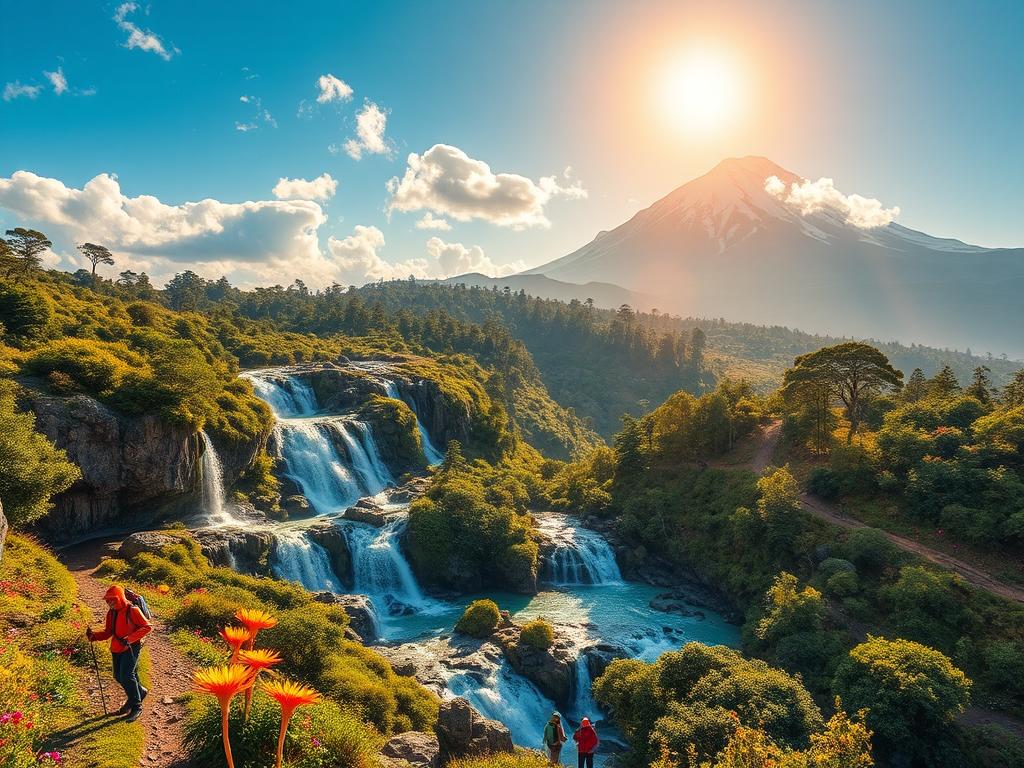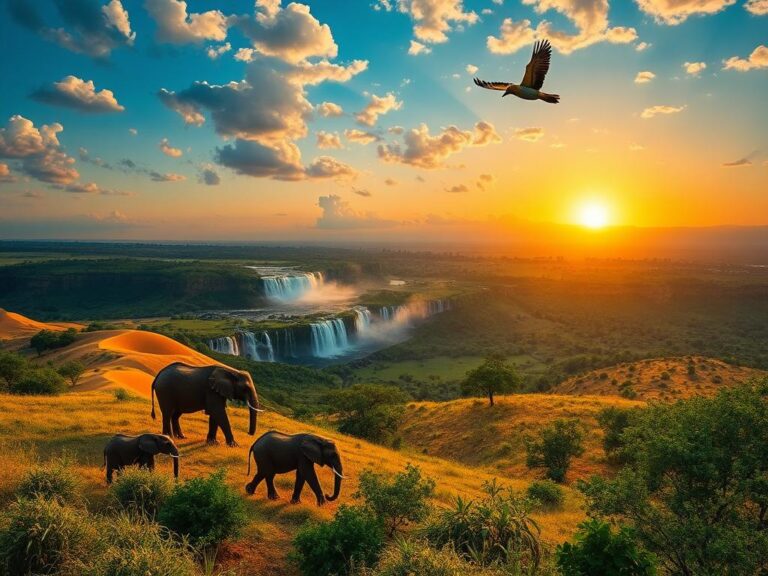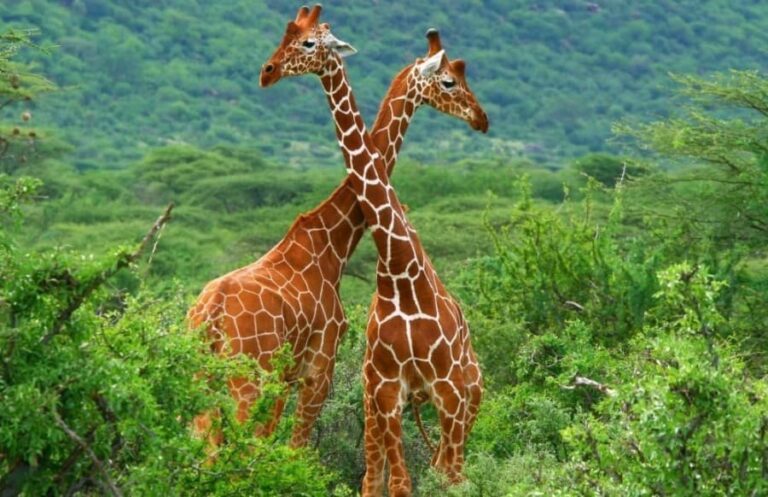
Hiking Adventures in Mount Kenya: Discover the Thrill of Nature's Majesty
A Journey through Kenyan and Tanzanian Safaris: An Unforgettable Experience
Kenya Tanzania safari is an adventure that paints a vivid picture of the African wilderness, lush landscapes, and rich cultural heritage.
With its diverse ecosystems, iconic wildlife, and stunning scenery, a safari in these two countries promises to be an unforgettable experience.
Whether it’s the thrill of witnessing the Great Migration or immersing yourself in the cultural vibrance of the local tribes, this article will guide you through everything you need to know to enjoy a successful safari.
Understanding the Safari Experience
A safari is more than just spotting wildlife; it is an immersive experience that encourages you to connect with nature on a deep level.
When you embark on a Kenya Tanzania safari, you are stepping into a world where humans and animals harmoniously coexist.
With the land unharmed by urban encroachment, the true essence of the wild is preserved as you traverse through national parks, reserves, and mountains.
This experience not only rejuvenates the soul but also allows you to appreciate conservation efforts that protect these stunning ecosystems.
From game drives and walking safaris to hot air balloon rides, every moment on a safari in Kenya and Tanzania is curated to offer adventure and joy.
Top Reasons to Explore Kenya and Tanzania Safaris
The decision to go on a safari in Kenya and Tanzania brings excitement and wonder that can be attributed to the unique experiences each provides.
Here are some compelling reasons to explore these incredible destinations:
- The Great Migration: Witness one of nature’s most remarkable spectacles as millions of wildebeest and zebras make their way across the plains of the Serengeti and Maasai Mara.
- Diverse Wildlife: Safari-goers can encounter an impressive variety of animals, including the “Big Five”: lions, elephants, leopards, buffalos, and rhinoceroses.
- Rich Culture: Engage with local tribes, such as the Maasai, and learn about their ancient customs, traditional lives, and unique ways of coexistence.
- Stunning Landscapes: Enjoy breathtaking views of savannahs, mountains, lakes, and even beaches that define the beauty of East Africa.
- Conservation Efforts: Participate in ecotourism by supporting national parks and reserves that promote the preservation of wildlife and habitats.
15 Must-See Locations on a Kenya Tanzania Safari
A safari wouldn’t be complete without exploring some of the best locations that Kenya and Tanzania have to offer.
Below are some highlights you should not miss:
- Maasai Mara National Reserve: Home to the Great Migration, where millions of wildebeest and zebra traverse the plains, the Maasai Mara is a must-see for any safari enthusiast.
- Serengeti National Park: Renowned for its vast savannas and diverse wildlife, this UNESCO World Heritage Site is iconic for both its East African landscapes and the annual migration.
- Ngorongoro Crater: The world’s largest unbroken volcanic caldera is not only a stunning geological feature but also teems with wildlife, making it a prime spot for game viewing.
- Lake Nakuru National Park: Famous for its flamingos and rhinos, Lake Nakuru offers breathtaking views and is a haven for birdwatchers and photographers alike.
- Tarangire National Park: Known for its large elephant herds and stunning baobab trees, Tarangire is less crowded than other parks, offering an intimate safari experience.
- Amboseli National Park: With spectacular views of Mount Kilimanjaro, Amboseli is renowned for its massive elephant population and diverse ecosystems.
- Zanzibar Island: After a thrilling safari, unwind on the beautiful beaches of Zanzibar, known for its turquoise waters and rich history.
- Aberdare National Park: This unique park is characterized by its cool mountain climate, dense forests, and amazing wildlife, including elephants, leopards, and rare wildlife species.
- Samburu National Reserve: Celebrate the uniqueness of Northern Kenya’s wildlife with sightings of the “Samburu Special Five”: Grevy’s zebra, the Somali ostrich, the reticulated giraffe, the Gerenuk, and the African wild dog.
- Masai Village: Immerse yourself in the culture by visiting a traditional Maasai village, learning about their customs, and experiencing their vibrant way of life.
- Hell’s Gate National Park: Ideal for biking and hiking, Hell’s Gate presents stunning landscapes and geothermal features, along with opportunities to see wildlife up close.
- Selous Game Reserve: As one of the largest game reserves in the world, Selous offers a more off-the-beaten-path safari experience with diverse ecosystems.
- Lake Manyara National Park: Famous for its tree-climbing lions and vast diversity of birdlife, Lake Manyara provides unique landscapes with lake views and cliff tops.
- Ruinsori National Park: Known for its rich biodiversity, this park offers captivating mountain scenery along with challenging hikes for adventure-seekers.
- Kilimanjaro National Park: While primarily a trekking destination, the area surrounding Africa’s highest mountain offers stunning safari experiences for wildlife enthusiasts.
Planning Your Kenya Tanzania Safari
Planning your safari can be as thrilling as the safari itself, but it requires careful consideration to make the most of your experience.
Here are some tips to create a seamless itinerary:
- Choose Your Travel Time: The best months to visit are during the dry season, from June to October, when wildlife is easier to spot.
- Decide on Your Travel Style: Calculate your budget and choose between luxury lodges, tented camps, budget camps, or self-drive safaris.
- Book in Advance: Popular accommodations fill up fast, especially during peak seasons; secure your spot early.
- Create a Balanced Itinerary: Mix exploration with relaxation by combining wildlife tours with cultural experiences.
- Pack Accordingly: Bring neutral-colored clothing, comfortable shoes, and essential safari gear like binoculars, sunscreen, bug spray, and a camera.
Essential Safety Tips for the Safari
While safaris are exhilarating, it’s vital to prioritize safety and wilderness etiquette.
- Follow Your Guide: Always adhere to safety instructions provided by your guide.
- Stay Inside the Vehicle: Keep your arms and legs inside the vehicle and avoid making loud noises that may disrupt the wildlife.
- Avoid Feeding Animals: Feeding wildlife is not only dangerous but also harms their natural survival instincts.
- Stay Alert: Watch your surroundings and keep your belongings close, especially in populated areas.
Experiencing Local Culture on a Safari
Cultural immersion enhances the safari experience, enabling visitors to connect with the local communities.
Engaging in cultural exchanges fosters a greater appreciation of the region’s heritage.
Consider visiting local Maasai villages or taking a guided tour that allows you to share in traditional dances, customs, and storytelling.
As environmentalist Ian Redmond stated, “The more we learn about wildlife and our planet, the more we respect every living being.”
Conclusion
The Kenya Tanzania safari is a life-changing journey that exposes travelers to the unrivaled beauty of nature and the richness of culture.
By immersing yourself in the abundant wildlife, breathtaking landscapes, and fascinating local traditions, you’ll create memories that last a lifetime.
Whether it’s the unforgettable sights of the Maasai Mara or the vibrant colors of Zanzibar, your safari promises to be nothing short of extraordinary.
FAQ
What are the best months to go on a Kenya Tanzania safari?
The best time to go is during the dry season, from June to October, when wildlife is more active and easier to spot.
Do I need a visa to enter Kenya and Tanzania?
Yes, most travelers require a visa to enter both countries. Check the specific requirements based on your nationality.
What vaccinations do I need for a safari?
Consult your healthcare provider about vaccinations, including yellow fever, hepatitis A and B, and typhoid, especially if you plan to visit rural areas.
Is it safe to go on a safari?
Safaris are generally safe when conducted by reputable operators and following safety guidelines. Always listen to your guide’s instructions.
Can I visit more than one national park in a single trip?
Absolutely! Many travelers choose multi-park itineraries to maximize their wildlife viewing and cultural experiences.
As your journey unfolds, you’ll find that both Kenya and Tanzania offer a rich tapestry of experiences that create unforgettable memories.
We invite you to share your thoughts, experiences, or questions about safaris in the comments section below.


